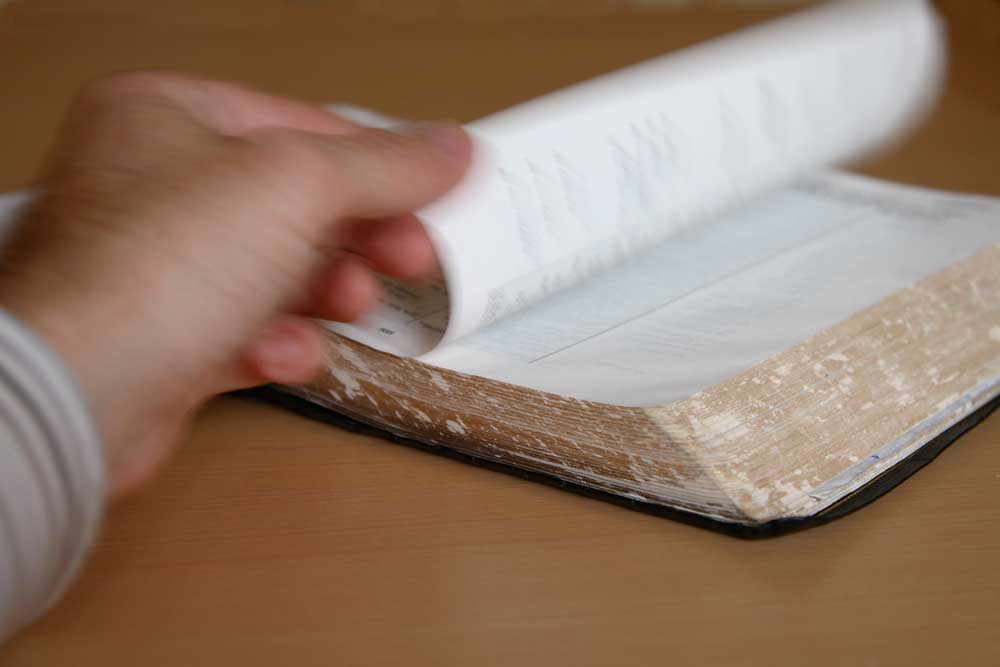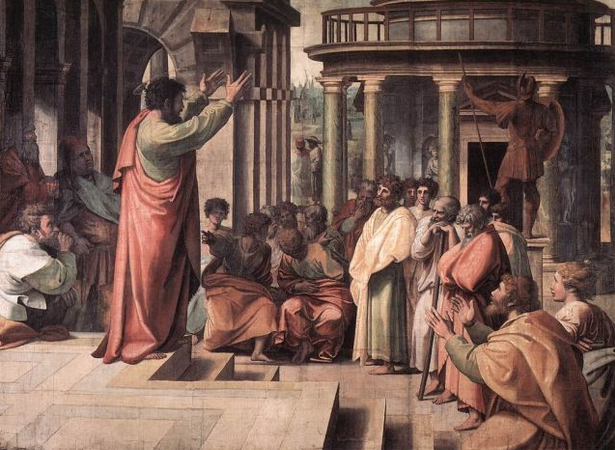Authority in the Anglican Communion
Authority in the Anglican Communion: Essays Presented to Bishop John Howe
edited by Stephen W. Sykes
Toronto: Anglican Book Centre
600 Jarvis St., Toronto,
Ontario, Canada M4Y 2J6, 1987, 286 pages.
reviewed by John Thompson
“Is Anglicanism based on a sufficiently coherent form of authority to form the nucleus of a world-wide fellowship of Churches, or does its comprehensiveness conceal internal divisions which may cause its disruption?” This was the question addressed in an episcopal statement from the 1948 Lambeth Conference. Now, forty years later, this issue is more alive than ever. It may, in fact, be the issue upon which historic Anglicanism founders in 1988. So, when a volume treating this subject is released prior to this summer’s Lambeth Conference—a volume of essays authored by prominent Anglicans from around the world—naturally there is a certain expectation of timely insights. Unfortunately, Authority in the Anglican Communion does not so much set itself to speak to the needs of the present situation as it addresses issues raised over twenty years ago by the ecclesiology of the Second Vatican Council. Still, it does offer the thoughtful reader certain insights and understanding of the current state of affairs.
Ironically, any inquiry into the Anglican position on authority quickly discovers that near-autonomy (“spiritual freedom” as it is more euphemistically called) is far dearer to the Anglican soul than the functions of authority. And this is a point not lost in the Sykes volume. Indeed, the witness to this pervasive attitude, though indirect, is one of the more enlightening and worthwhile features of the book. In the words of Lambeth 1948 (the book is very much concerned with the ongoing relevance of Lambeth 1948’s views on authority in the post-Vatican II world), Anglicanism has secured itself against ecclesiastical tyranny by dispersing authority “among Scripture, Tradition, Creeds, the Ministry of the Word and Sacraments, the witness of saints, and the consensus fidelium, which is the continuing experience of the Holy Spirit through His faithful people in the Church.” Of course the question then is, what does this wonderfully worded statement mean in actual practice; and here the book helps to fill out the meaning. For instance, the idea of the dispersion of authority coincides with Stephen Sykes’ treatment of “ordered liberty” in his introduction to the volume. It is also developed at some length by Archbishop H. R. McAdoo of Dublin in his key article, “Authority in the Church: Spiritual Freedom and the Corporate Nature of Faith.” As the title implies, in McAdoo’s treatment of “spiritual freedom” is maintained by balancing the freedom of the individual believer and the obligations which membership in the church impose.
As might be expected, these valued ideals—the dispersion of authority, ordered liberty, and spiritual freedom—go hand in hand with a certain latitude of belief and practice (greater than that allowed, for instance, in pre-Vatican II Catholicism). Breadth of perspective is itself an ideal encouraged in most Anglican churches and upon which Anglicans have historically prided themselves. The concerned orthodox-minded reader of this book will ask just how far does this breadth of perspective, this “comprehensiveness”, extend? How much latitude is to be allowed? St. Augustine’s famous dictum may well come to mind: “In essentials, unity; in nonessentials, latitude; and in all things, charity.” So, we may ask, what is essential for Anglicans and what is not? Even on certain central issues such as sexual ethics, the bodily resurrection of Christ, the nature of ordination and episcopacy, no consensus is presently apparent, and this is where the question of authority comes in. How then and on what authority are the matters of dispute to be decided? Or can they be?
There are two basic questions here. First, from either the standpoint of historic orthodoxy or practical cohesiveness, is the policy of latitude as presently practiced too open-ended? Is it viable? Second, is there any authority or structure in the Anglican Communion able to make a decision between fundamentally conflicting positions? (Of course, such a structure would not guarantee orthodoxy.) Both questions are inter-related and together constitute perhaps the most critical issues faced by the Anglican Communion since its growth in the nineteenth century. Both questions ultimately relate to authority.
Now, with regard to the issue of excessive latitude, the archbishop of Canterbury would like to reassure his flock that Anglicanism’s latitude is not headed for fundamental self-contradiction, as indicated in his comments cited by H. R. McAdoo:
It is quite alien to original Anglican thought that there could be logically opposite expressions of faith in fundamentals. To be an Anglican is not to be content with self-contradiction. . . .
What is more, the archbishop defines comprehensiveness as “the achievement of unity in diversity by means of the Holy Scriptures interpreted by Tradition, in the light of Reason, all expressed in and through the corporate worship of the Church.” How very Anglican! How seemingly sensible! But it is quite apparent that there is no agreement on how to interpret these things anymore. This is what fuels the present crisis in Anglicanism, and to this need these essays offer no convincing approach.
With regard to the second question, that ability of a church to exercise the authority necessary to keep its house in order, this book gives a certain overview of operations, but not at all as insightful as that offered by the now infamous “Preface” to the 1988 Crockford’s Clerical Directory. The Sykes volume describes how, at present, authority is mostly exercised on the diocesan level (the region under the oversight of a particular bishop) by a diocesan synod. The bishop(s), clergy, and laity together are supposed to reach a functional consensus on issues. (This volume contains an excellent discussion of this in K.S. Chittleborough’s chapter on the “Bishop-in-Synod”). Differences between dioceses are to be resolved by a national synod, which is also made up of bishops, clergy, and laity. For differences between the national churches of the Communion, however, there is no authoritative equivalent.
It is on the international level that the dilemma is most strikingly apparent. What happens when the bishops, clergy, and laity in one country say that God is leading them in one direction, but their counterparts in another country come to an opposite conviction? The bishops of the member churches can meet, as they do once every ten years at Lambeth, but there is no authority to establish policies which are binding on the independent national churches. The same is true of other forums for cooperation between Anglican churches: the Anglican Consultative Council (in which Bishop John Howe, to whom this volume is dedicated, had been singularly instrumental); the biennial meetings of the primates of the various national churches; and even the office of the archbishop of Canterbury—the very idea of an imposed settlement seems to be anathema to Anglican polity. (It was this inability to enforce any restraint on the American church which allowed it to act independently in 1976 in ordaining women to the priesthood.)
The fact is, however, that from the time of Henry VIII in the sixteenth century, Anglicanism has been deeply divided. Any one who has even glanced at a history of the Church of England or the Episcopal Church in the U.S.A. or any other Anglican national church knows that different perspectives, whether high, low, or broad, liberal or conservative, have existed side by side. Member churches of the Anglican Communion can be described as a family only in a very loose sense—on the basis of a common liturgical and doctrinal heritage from the Church of England. To many this now appears to be an exceedingly thin historical thread.
John Thompson is a librarian and professor at Waynesburg University, Waynesburg, Pennsylvania
subscription options
Order
Print/Online Subscription

Get six issues (one year) of Touchstone PLUS full online access including pdf downloads for only $39.95. That's only $3.34 per month!
Order
Online Only
Subscription

Get a one-year full-access subscription to the Touchstone online archives for only $19.95. That's only $1.66 per month!
bulk subscriptions
Order Touchstone subscriptions in bulk and save $10 per sub! Each subscription includes 6 issues of Touchstone plus full online access to touchstonemag.com—including archives, videos, and pdf downloads of recent issues for only $29.95 each! Great for churches or study groups.
Transactions will be processed on a secure server.
more on protestant from the online archives
more from the online archives
calling all readers
Please Donate
"There are magazines worth reading but few worth saving . . . Touchstone is just such a magazine."
—Alice von Hildebrand
"Here we do not concede one square millimeter of territory to falsehood, folly, contemporary sentimentality, or fashion. We speak the truth, and let God be our judge. . . . Touchstone is the one committedly Christian conservative journal."
—Anthony Esolen, Touchstone senior editor












